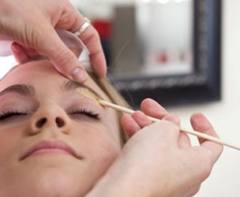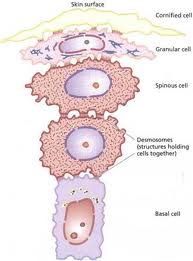The Waxing Facial
I have been doing waxing facials throughout my career. Most Aestheticians that I speak to have never heard of this concept. I would like to share this concept with you. This type of facial is for the Aesthetician who understands the skin and waxing procedures, and not afraid to combine them. If you break down a facial, waxing is done in laue of the exfoliation stage. Waxing exfoliates the skin naturally. Think of this facial as a cool facial, DO NOT USE STEAM OR HOT TOWELS!!! This facial does not include a massage as well. This facial can be done using strip or stripless wax. I personally prefer stripless or hot wax for the face. The hot wax doesn’t adhere to the delicate facial skin because of a protective barrier by using an oil. The wax only adheres to the hair only. With stripless or hot wax, you also can go over the treated area more than once, this helps to make sure you get every hair. This is why I prefer stripless or hot wax for Brazilians as well.
The Waxing Facial Protocol
Cleanse- Use a cleanser that is strictly for the clients skin type
Tone- Prepare the skin for wax. Many wax manufactures provide a pre-cleanser or toner.
Oil- Thinly and sparingly apply a prewaxing oil. If you utilize a strip wax, then apply powder. I personally don’t care for Johnson and Johnson’s because it has fragrance in it.
Wax- I use ONLY Stripless/Hot Wax
Start with Chin and move clockwise. It is as if you are plowing a field. By using Stripless wax you can slightly overlap your areas. This makes sure you do not miss any hairs. I like to finish with the brows.
Post waxing solution if wax residue is left behind.
Mask- Aloe/CoolingSoothing Mask allows the skin to calm down.
High Frequency- I use the mushroom bulb through the mask. High Frequency kills all bacteria.
Remove the mask with a cool towel.
Vitamin C- Anti Inflammatory
SPF- this is a must. Any exfoliation procedure elivated photo sensitivity
Contraindications
As skin therapist, we understand the basics in dealing with contraindications with waxing, however the facial skin is different. If the client is having exfoliation treatments such as microdermabrasion, chemical peels or even enzymes, the skin has been compromised. The ability of removing skin is greatly increased. Prescription creams can cause trouble as well. Please stay abreast on common prescriptions that doctors give their patients, they may just be on your table. Make sure your intake form has been studied before any waxing is provided. As a cautionary time line, I prefer 1 month out of the use of ANY Alpha or Beta Hydroxy’s such as Glycolic’s, Salicylic, Lactic or Mandelic home care products or treatments. If the client is taking antibiotics or are on a course of medical skin treatment(s) such as Accutane, Retinol, Retin-A, or Renova, hold off on waxing until you have finished the medication and the chemicals are out of their system. These medications should be listed on your intake form for your clients and patients to indicate. Having a “clean” skin palette is the key to prepping their face for waxing, and has as much to do with what’s not present — as well as what is. Make sure the face is free of any injured areas which includes minor cuts, irritated pimples, or a sunburn. If your client is pregnant, they are more likely to be sensitive to waxing, and diabetics typically take longer to heal after a wax.
On the menu…
When I have listed “Waxing Facial” on my spa menu, this sparks peoples interest. This is why your spa menu is another avenue of advertisement and not just a list of treatments and prices. This tells your clients that you are prolific with facial waxing. I like to have The Waxing Facial on the menu booked out for 1 hour. This time allots you to be thorough. As you work with your clients and become comfortable then you can do the Waxing Facial for 30 minutes. Your pricing should be comperable to a basic 60 min and 30 min facial, minus $20 (for example, if your 60 minute European Facial is $85, then your Waxing Facial should be $65). Waxing is one of the most rewarding treatments we can do in our rooms because you give them immediate results and has the highest loyalty rate. When a clients mind is sparked with the possibilities of a hairless face, they book. —
If you are interested in having the Waxing Facial with me, I am at Essentials Spa in Wesley Chapel on Fridays and Sat’s! http://www.myessentialsspa.com/
at Essentials Spa in Wesley Chapel on Fridays and Sat’s! http://www.myessentialsspa.com/
 at Essentials Spa in Wesley Chapel on Fridays and Sat’s! http://www.myessentialsspa.com/
at Essentials Spa in Wesley Chapel on Fridays and Sat’s! http://www.myessentialsspa.com/
